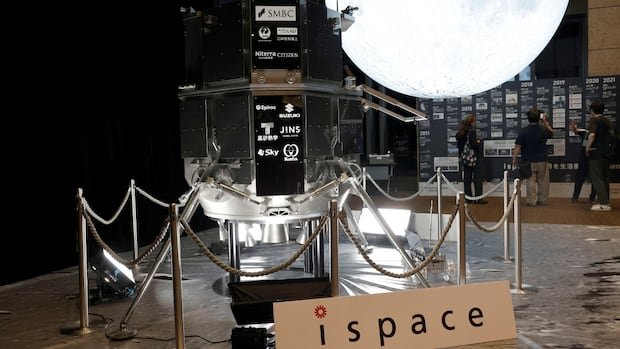A Japanese private lunar lander met with failure during its attempted touchdown on Friday, adding to the setbacks in the commercial space race to reach the moon. The Tokyo-based company ispace announced the mission’s failure after losing communication with the lander, despite efforts by flight controllers to reestablish contact. The breakdown in communication occurred just before the spacecraft was set to land on the moon with a mini-rover, following a seemingly smooth descent from lunar orbit.
Takeshi Hakamada, the CEO and founder, expressed apologies to all involved in the mission, marking the second unsuccessful lunar mission for ispace. The company’s previous moonshot also ended in a crash landing, prompting the naming of its subsequent lander “Resilience.”
Following a preliminary analysis, officials indicated a probable issue with the laser system used to measure altitude, causing the lander to descend too rapidly. As a result, the lander likely experienced a hard landing on the lunar surface. The moon, traditionally explored by governments, has become a focal point for private enterprises since 2019, with a mix of successes and failures along the way.
Resilience, launched in January from Florida, entered lunar orbit recently after a joint SpaceX launch with Firefly Aerospace’s Blue Ghost, which achieved the first successful private landing on the moon earlier. Despite the setback, ispace aimed to land Resilience in a relatively safe region on the moon’s surface for further exploration.
The mission involved deploying a rover named Tenacious, equipped with advanced imaging capabilities and a soil-sampling shovel for collaboration with NASA. Even with the setback, Hakamada emphasized that ispace remains committed to future lunar missions, including a larger lander planned for launch by 2027 in partnership with NASA.
With the cost of the failed mission undisclosed, ispace acknowledged the financial constraints associated with repeated setbacks. Other U.S. companies, including Blue Origin and Astrobotic Technology, are also targeting moon landings by the end of the year. Despite challenges, space agencies and private companies worldwide continue to strive for lunar exploration, with NASA planning crewed missions in the near future, while China sets its sights on a lunar landing by 2030.

